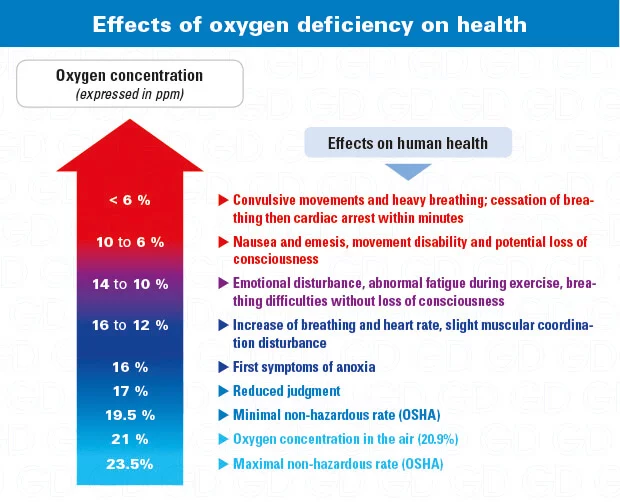Oxygen – O2
Dioxygen here ( O2 ) or oxygen You can find basic information about: properties, health effects, detection devices and systems – O2 monitor or rather oxygen depletion sensor – and respiratory protective equipment (self-contained breathing apparatus and supplied-air respirator).
Oxygen properties (O2)
dioxygen ( O2 ) – most commonly oxygen Known as – it is a gas that occurs naturally in the atmosphere at a rate of approximately 20%. Essential to almost every life form on Earth . This highly reactive The gas can easily produce compounds (especially oxides) from elements except noble gases such as helium or neon.
- CAS
- 215-629-8
- LSE / LSE
- –
- TWA / STEL
- –
- IP
- 12.1 eV
- DENSITY/AIR
- 1.43
- FILTER/SCBA
- SCBA
Health effects of oxygen
Oxygen ( O2 ), constituting 10.9% of inhaled air colorless , odorless and is a tasteless gas. Unlike the vast majority of gases, the lower the oxygen (O2) concentration, the higher the health risks. In the medical field, O2 is primarily inhaled in the treatment of asphyxia, carbon monoxide poisoning or acute pulmonary edema… This gas is measured in % volume, not ppm.
Oxygen gas O2 monitor
Because oxygen is colorless and odorless, this gas cannot be detected without appropriate equipment. Only one O2 monitor ( portable 4gazlı dedektör oxygen depletion sensor ) can accurately measure oxygen concentrations in the air. Therefore a vol% It is recommended to use an oxygen detection device.
Oxygen calibration gas cylinders are available for the calibration and gas tests of your fixed or portable gas detectors.
Poorly oxygenated area respiratory protective equipment – O2
Since any air-purifying respiratory protective device will be ineffective in case of oxygen deficiency, it should not be used during long-term interventions. self-contained breathing apparatus or It is recommended to use an air-supplied respirator.

